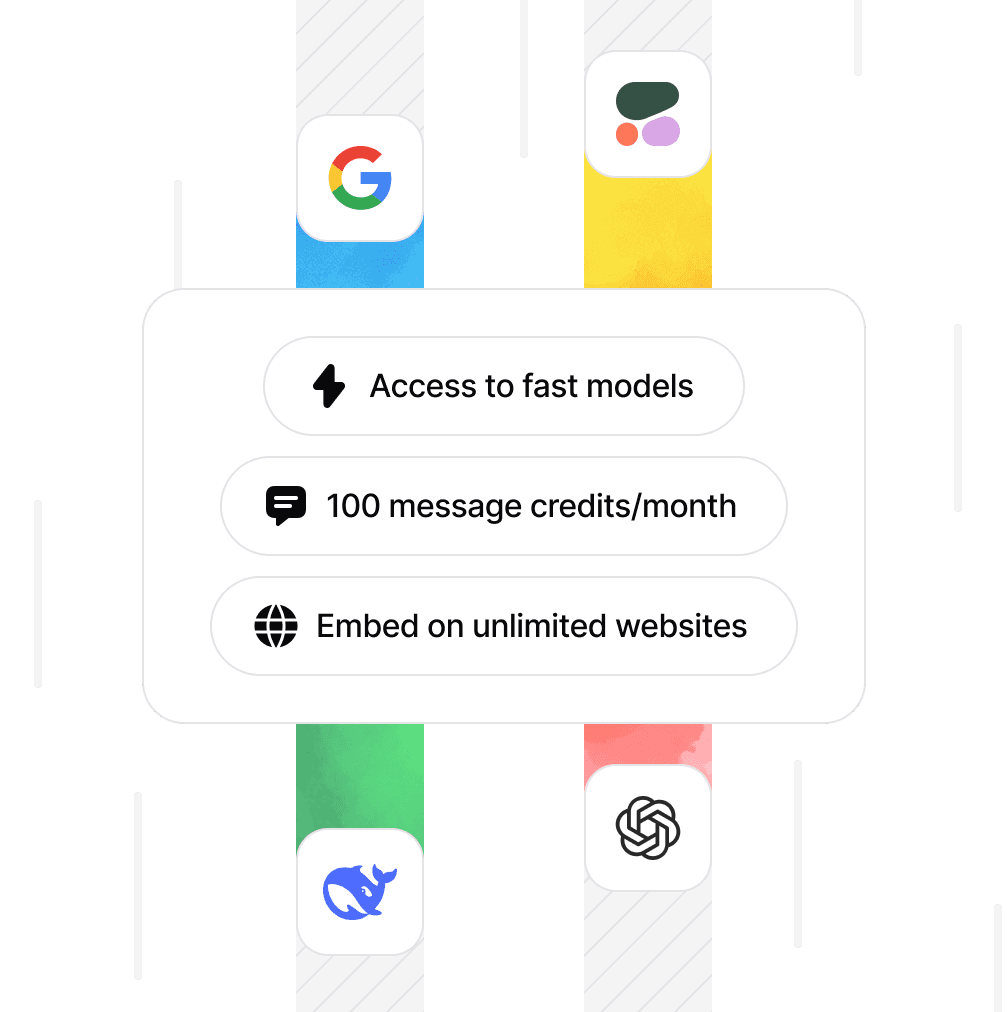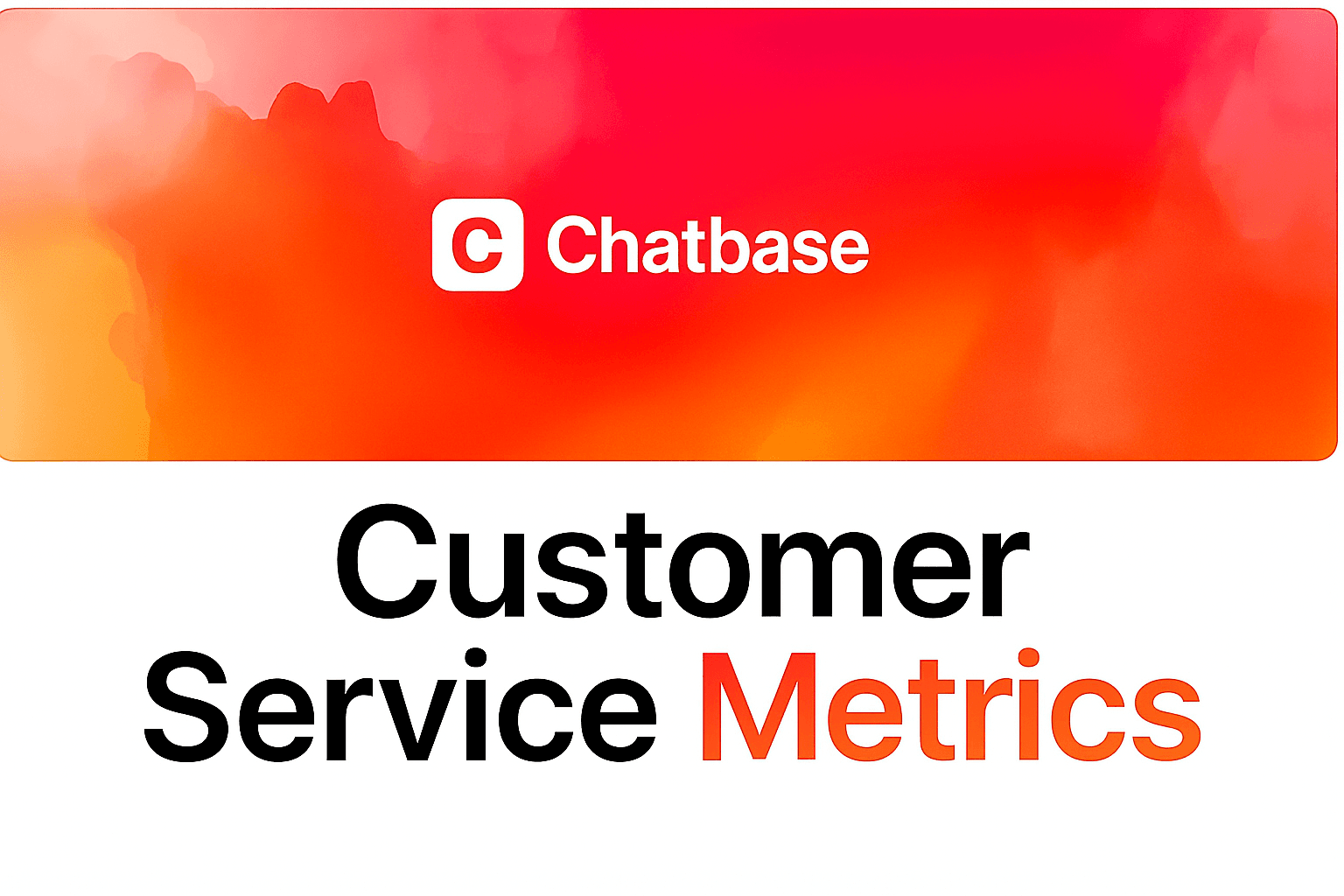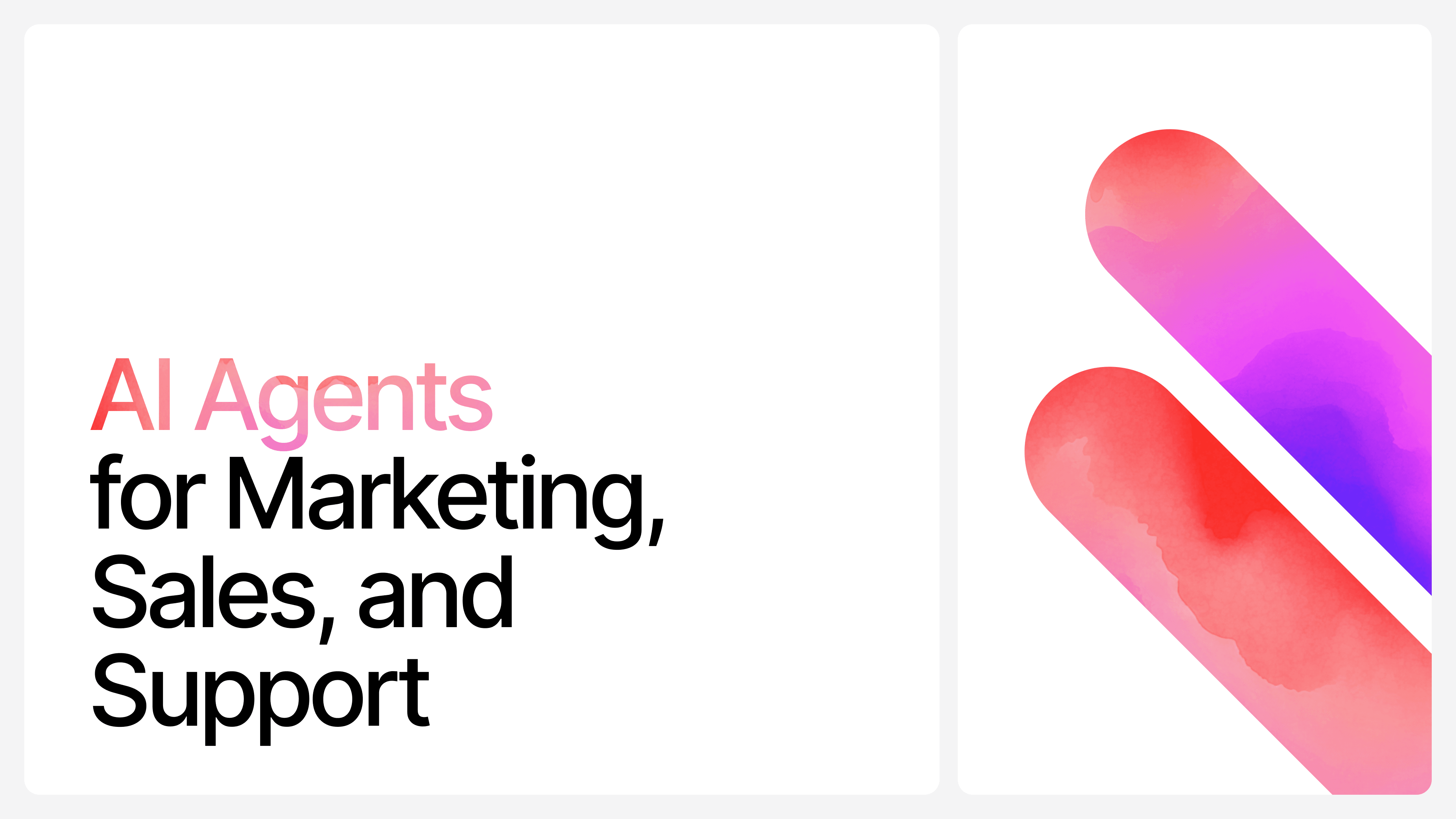7 Biggest AI Trends for 2025: What's Next?
Ilias Ism
Oct 1, 2024
19 min read

Artificial Intelligence (AI) is evolving at breakneck speed, reshaping industries and our daily lives. As we are diving into 2025, the AI landscape is more exciting than ever.
This year, we're witnessing a seismic shift from experimentation to real-world implementation. From multimodal AI to enhanced chatbots, the possibilities seem endless.
In this post, we'll explore 7 game-changing AI trends that are set to dominate 2025:
- Multimodal AI
- AI-powered virtual agents
- Small language models (SLMs)
- Chatbase and AI chatbot builders
- AI in scientific research
- Ethical AI and regulations
- AI accessibility for businesses
AI will see at least a $50B increase in 2025. Get ready to discover how these trends are revolutionizing technology, business, and society.
![[object Object]](/_next/image?url=https%3A%2F%2Fcdn.sanity.io%2Fimages%2Fi6kpkyc7%2Fprod-dataset%2F9bd83664fcc67413bc8e60db1f365dd908ad9259-1200x912.webp&w=3840&q=75)
Plus, learn why Chatbase and other AI chatbot builders are becoming a key trend, with more websites featuring intelligent conversational widgets.
Let's dive in and explore the future of AI!
1. Multimodal AI
![[object Object]](/_next/image?url=https%3A%2F%2Fcdn.sanity.io%2Fimages%2Fi6kpkyc7%2Fprod-dataset%2F3a2e9a3c0079d7279799b771927d3e1a8ea8c12c-1344x768.jpg&w=3840&q=75)
Multimodal AI is emerging as a game-changer in 2025. Unlike previous models that focused on single data types, multimodal AI can process and integrate multiple forms of input, such as text, images, audio, and video. The integration of multimodal AI capabilities into mobile development frameworks is revolutionizing how apps interact with users, enabling more intuitive experiences that can process and respond to multiple input types simultaneously. An excellent example of multimodal AI in action is an AI flyer generator that combines text and image processing to create visually appealing flyers. AI can generate professional-quality flyers by analyzing user-provided text, such as event details or promotional content, integrating it with relevant design elements like background images, icons, and typography. This capability demonstrates how multimodal AI seamlessly blends different data types to enhance creativity and productivity, making it a valuable tool for mobile app developers creating dynamic user interfaces.
This capability allows for more human-like interactions and richer AI experiences.
Key developments in multimodal AI include:
- OpenAI's GPT-4 can now generate text from text, audio, and visual inputs
- Google's Gemini model showcases impressive multimodal capabilities
- Microsoft's Designer app uses multimodal AI for graphic design tasks.
- Decktopus, an AI presentation tool, is another example of how multimodal AI is simplifying creative workflows by combining text and design elements seamlessly.
The impact of multimodal AI extends across industries:
- Healthcare: Analyzing medical images alongside patient history for more accurate diagnoses
- Brands are using AI to generate flyer content that combines compelling copy with visually optimized layouts, streamlining campaign design.
- Customer service: Providing more intuitive and comprehensive support
- Content creation: Enabling the generation of diverse media types from a single prompt
- Event agency: Enhancing event planning with AI-driven personalization, automated logistics, and real-time audience engagement insights
As multimodal AI continues to advance, we can expect more seamless and natural interactions between humans and AI systems. An AI app development company can harness these capabilities to build next-gen applications that bridge multiple data formats effortlessly.
2. AI Agents
![[object Object]](/_next/image?url=https%3A%2F%2Fcdn.sanity.io%2Fimages%2Fi6kpkyc7%2Fprod-dataset%2F44f43f6b1fcf563109827e1a6709cfdeddf9e472-1344x768.jpg&w=3840&q=75)
AI agents are becoming increasingly sophisticated, moving beyond simple chatbots to more intelligent, context-aware assistants.
These agents are transforming customer service, productivity, and user interactions across various platforms.
Key trends in AI-powered virtual agents:
- Natural language processing improvements for more human-like conversations
- Integration with business systems for personalized and data-driven interactions
- Emotional intelligence capabilities to better understand and respond to user sentiment
Notable developments:
- OpenAI's ChatGPT continues to evolve, offering more advanced conversational abilities
- Google's LaMDA showcases impressive dialogue capabilities
- Microsoft's Copilot integrates AI assistance across its suite of productivity tools
The rise of AI virtual agents is leading to:
- Enhanced customer support with 24/7 availability and quick response times
- Improved employee productivity through AI assisted task management
- More personalized user experiences in various applications and services
- Automated clipping path, automated design services and more
3. Small Language Models (SLMs)
![[object Object]](/_next/image?url=https%3A%2F%2Fcdn.sanity.io%2Fimages%2Fi6kpkyc7%2Fprod-dataset%2F4a13a979247c91858fb2c646f1a273af1db6c9c1-1344x768.jpg&w=3840&q=75)
While large language models (LLMs) have dominated headlines, 2025 is seeing a surge in the development and adoption of small language models (SLMs).
These more compact models offer several advantages over their larger counterparts.
Key benefits of SLMs:
- Much lower costs for development and implementation
- Allowing more micro-interactions on your website
- Simplify and improve UX for customers
Notable SLM developments:
- Microsoft's Phi and Orca models demonstrate impressive performance despite their smaller size
- GPT-4o-mini, GPT-o1-mini and more
- Claude 3.5 haiku and more
- Meta's LLaMA 2 showcases the potential of open-source SLMs
- Google's ongoing research into more efficient language models
The rise of SLMs is enabling:
- AI capabilities on edge devices and smartphones
- More accessible AI app development for smaller organizations and researchers
- Faster inference times for real-time applications
4. Chatbase and AI Chatbot Builders
![[object Object]](/_next/image?url=https%3A%2F%2Fcdn.sanity.io%2Fimages%2Fi6kpkyc7%2Fprod-dataset%2F1018468d37f20bffe3c0b999231777790b22896b-1344x768.jpg&w=3840&q=75)
A key trend in 2025 is the proliferation of AI chatbot builders like Chatbase, which are making it easier than ever for businesses to implement conversational AI on their websites.
This trend is driven by the growing demand for personalized customer interactions and 24/7 support.
Why Chatbase and similar platforms are gaining traction:
- No-code/low-code solutions for easy implementation
- Customization options to align with brand voice and specific use cases
- Integration with existing business systems and databases
The impact of AI chatbot builders:
- More websites featuring intelligent conversational widgets
- Improved customer engagement and support efficiency
- Democratization of AI technology for businesses of all sizes
As this trend continues, we can expect to see a significant increase in the number of websites offering AI-powered chat experiences, enhancing user interactions and streamlining customer support processes.
5. AI in Scientific Research
![[object Object]](/_next/image?url=https%3A%2F%2Fcdn.sanity.io%2Fimages%2Fi6kpkyc7%2Fprod-dataset%2F6ddae89d30d8dbfbb499437bb3959ecf8148b73c-1344x768.jpg&w=3840&q=75)
AI is making significant strides in accelerating scientific discoveries and addressing global challenges.
In 2025, we're seeing AI tools designed specifically to speed up research in various scientific domains. Similarly, graphic design courses now use AI tools to help students research design trends, gather visual references, and learn faster.
Key areas where AI is advancing scientific research:
- Climate change mitigation: AI-powered weather predictors and carbon estimators
- Drug discovery: Accelerating the search for new treatments and medicines
- Materials science: Using AI to discover novel materials with specific properties
Notable AI-driven scientific projects:
- Microsoft's Project FarmVibes for sustainable agriculture
- Collaboration between Microsoft and Paige to build an AI model for cancer detection
- AI-assisted discovery of less toxic battery materials
The integration of AI in scientific research is:
- Compressing years of trial and error into weeks or months
- Enabling more accurate predictions and simulations
- Facilitating interdisciplinary collaborations and discoveries
6. Ethical AI and Regulations
![[object Object]](/_next/image?url=https%3A%2F%2Fcdn.sanity.io%2Fimages%2Fi6kpkyc7%2Fprod-dataset%2F4dde57a4dc9efe193eada3f527b7ff2b9cc6e25e-1344x768.jpg&w=3840&q=75)
As AI continues to evolve in power and complexity, security becomes a foundational topic. This year will see organizations relying more on sophisticated defenses capable of protecting AI systems at every layer from initial data inputs and model training to runtime monitoring. Solutions tailored specifically to safeguard AI workloads including cloud infrastructure, identity management, application interfaces, and supply chains are playing a critical role in the conversation around safe adoption. Those implementing advanced tools for secure development are better positioned to detect risks before they escalate.
2025 is seeing increased efforts to ensure AI development and deployment align with societal values and legal standards.
Key developments in AI ethics and regulations:
- The European Union's AI Act, setting comprehensive rules for AI systems
- Increased transparency requirements for AI companies regarding data collection and model training
- Growing emphasis on explainable AI to build trust and accountability
Challenges and considerations:
- Balancing innovation with responsible AI development
- Addressing bias and fairness in AI systems
- Ensuring privacy and data protection in AI applications
The focus on ethical AI is leading to:
- More robust governance frameworks for AI development and deployment
- Increased investment in responsible AI research and implementation
- Greater public trust and acceptance of AI technologies
7. AI Accessibility for Businesses
![[object Object]](/_next/image?url=https%3A%2F%2Fcdn.sanity.io%2Fimages%2Fi6kpkyc7%2Fprod-dataset%2F193cfa79005b016e68a109dfefdd265f225c2c1a-1344x768.jpg&w=3840&q=75)
2025 is witnessing a democratization of AI technologies and AI software development, making them more accessible to businesses of all sizes. From image generation models to multimodal models, there is a lot of things to be excited about.
This trend is driven by advancements in cloud-based AI services, open-source models, and user-friendly development tools. Tools like a PDF accessibility checker are also benefiting from these advancements, becoming smarter and easier to use
Key factors enabling AI accessibility:
- Cloud-based AI platforms offering scalable and cost-effective solutions like OpenRouter, Google, OpenAI, HuggingFace, Replicate
- Open-source AI models and frameworks lowering barriers to entry like Meta, Mixtral
- No-code and low-code AI development tools for non-technical users like Chatbase
- AI-powered solutions like an AI commercial generator that simplify creating professional marketing videos and ads for businesses of all sizes
The impact of increased AI accessibility:
- More small and medium-sized businesses leveraging AI capabilities
- Diverse industry-specific AI applications emerging across sectors
- Increased competition and innovation in AI-driven products and services
As AI becomes more accessible, we can expect to see a wider range of businesses benefiting from AI-powered insights, automation, and enhanced customer experiences.
Conclusion
![[object Object]](/_next/image?url=https%3A%2F%2Fcdn.sanity.io%2Fimages%2Fi6kpkyc7%2Fprod-dataset%2F41ea64c35e750d54e60fe4075b16700b54feabea-1024x682.webp&w=3840&q=75)
The AI landscape in 2025 will be marked by rapid advancements and widespread adoption across industries.
From multimodal AI enhancing user interactions to small language models democratizing AI software development, these trends are reshaping how we work, communicate, and solve complex problems.
The rise of platforms like Chatbase highlights the growing importance of conversational AI in business strategies.
As more websites incorporate AI-powered chat widgets, we can expect to see a transformation in how businesses engage with their customers online.
The journey of AI is far from over, and the developments we're seeing in 2024 and 2025 are just the beginning of a transformative era in technology and society.
Share this article:







